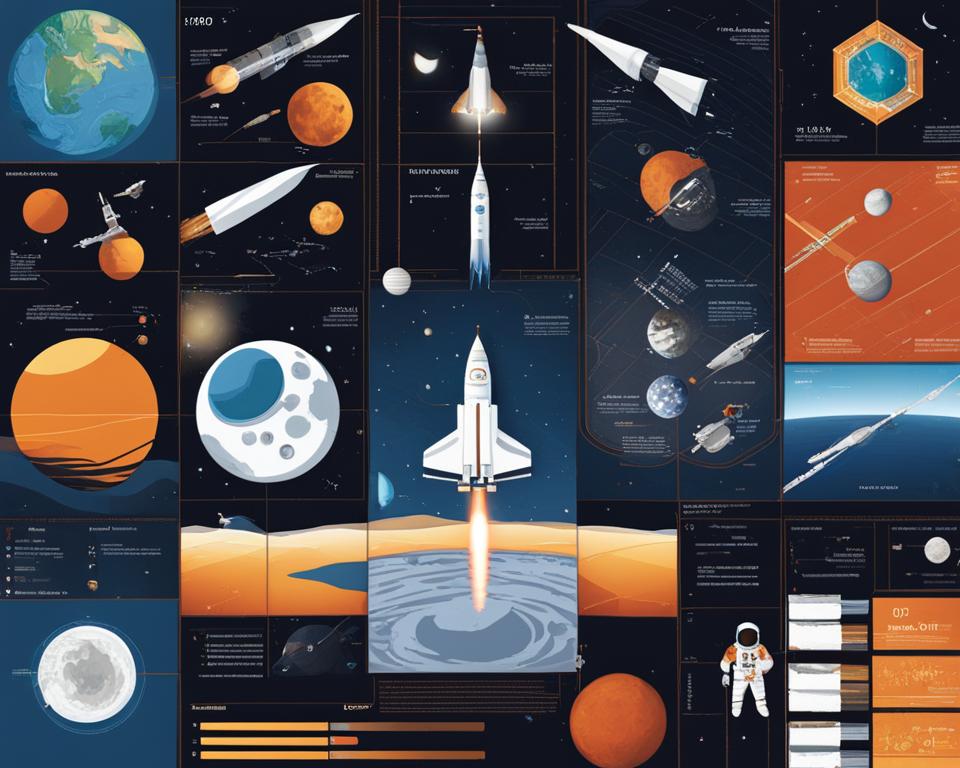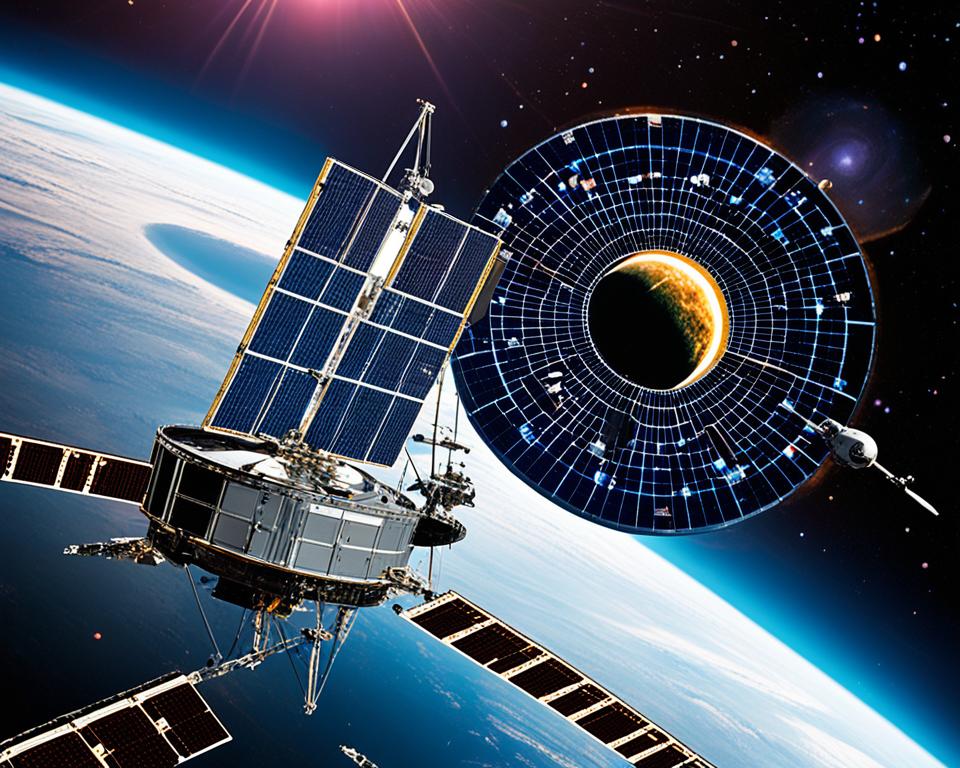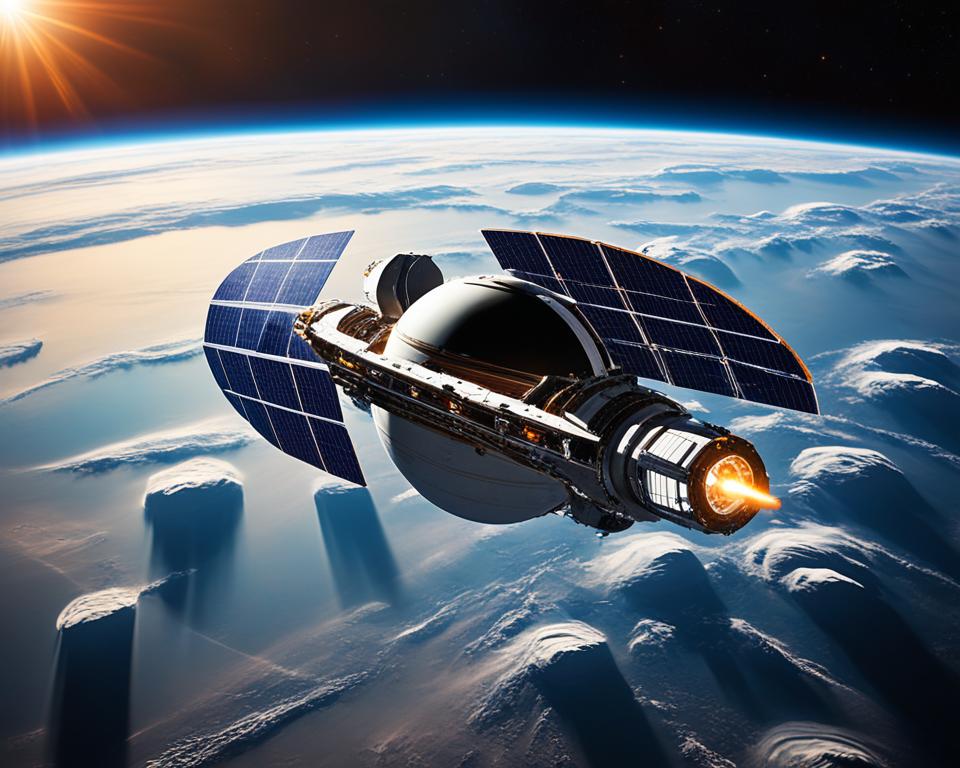Adverts
On July 20, 1969, man set foot on the Moon for the first time during the Apollo 11 Mission. Since then, there have been only ten more astronauts who have explored the lunar soil. However, NASA plans to return to the Moon in 2024 with the Artemis Program, with the aim of establishing a lasting human presence and beginning the process of lunar colonization. This program also aims to take the first woman to lunar soil, marking a significant milestone in the space exploration.
Adverts
Main points to highlight:
- O Artemis Program aims to return to the Moon and establish a lasting human presence
- O Artemis Program will mark the first manned flight to the Moon since 1972 and will take the first woman to the lunar soil
- NASA is building the Space Launch System, the largest and most powerful rocket ever built, to take astronauts on their lunar missions
- A Moon Base will be used for the long-term exploration and natural resources research
- O future of space exploration promises technological advances and exciting discoveries
Artemis Program: Return to the Moon
The Artemis Program, named after the Greek goddess of the Moon, is NASA's new space venture that aims to return to the Moon. With the help of private companies and the development of the largest rocket of all time, the Space Launch System, NASA plans to land astronauts on the Moon and establish a lasting human presence. The Artemis Program also marks the first manned flight to the Moon since 1972 and will land the first woman on the Moon.
The Artemis Program is an ambitious initiative that represents a significant milestone in space exploration. Its goal is to establish a sustainable presence on the Moon, paving the way for future manned missions to Mars. The program also seeks to promote diversity and inclusion, marking the first time that a woman will set foot on lunar soil.
Adverts
With the development of Space Launch System, NASA will have the ability to transport astronauts and cargo to the Moon more efficiently than ever before. The rocket will be capable of launching heavy payloads, including supplies and equipment essential for the construction of a lunar base.
The Artemis Program is also partnering with private companies to drive innovation and accelerate progress in space exploration. These partnerships will enable the development of advanced technologies and creative solutions to overcome the challenges of returning to the Moon and establishing a continued presence.
Main Objectives of the Artemis Program
- Return to the Moon by 2024;
- Establish a lasting human presence;
- Carry out scientific experiments and collect data;
- Develop essential technologies for future missions to Mars;
- Inspire the next generation of space explorers.
“The Artemis Program represents a new era of space exploration and an important step for humanity. We look forward to returning to the Moon and continuing our journey to the stars.” – NASA Administrator
With the Artemis Program, NASA is paving the way for an exciting future in space exploration. O return to the moon It will mark the beginning of a new era of scientific discoveries and technological advances. Furthermore, establishing a lasting human presence on the Moon will serve as a springboard for future missions to Mars and beyond.
| Artemis Program: Return to the Moon | Details |
|---|---|
| Start date | 2024 |
| Biggest Rocket | Space Launch System |
| goal | Establish a lasting human presence on the Moon |
| First Woman on the Moon | Part of Artemis mission |
| Partnerships | Private companies to drive innovation |
The Space Launch System and Orion Crew Module
NASA is building the Space Launch System, the largest and most powerful rocket ever built, to carry astronauts on their trips to the moon. This system will be crucial to the success of the Artemis Program and will allow NASA to fulfill its mission of establishing a lasting human presence on the Moon.
Astronauts will use the Orion Crew Module, an advanced spacecraft designed especially for this purpose. O Orion Crew Module will have the capacity to transport up to 4 astronauts comfortably and safely during trips to the moon and is also being developed for future missions to Mars.
See too:
Combining the powerful Space Launch System and state-of-the-art spacecraft Orion Crew Module, NASA is preparing the resources needed to achieve its ambitious space exploration goals.
Gateway: The Lunar Space Station
A Gateway is a space station that will be built in lunar orbit as part of the Artemis Program. It will serve as a mandatory stopping point for astronauts before landing on the moon. A Gateway will allow astronauts to dock with it and have access to the lunar landing module, exploration vehicles, scientific experiments and systems to ensure the human stay on the Moon. After completing their tasks on the Moon, the astronauts will return to Gateway before returning to Earth.
Gateway will play a crucial role in the Artemis Program, providing support and resources for lunar missions. It will be a modular space station that will allow different modules to be connected, providing a flexible platform for lunar exploration.
A lunar space station it will be equipped with research laboratories, astronaut housing, life support systems, communication and power systems, as well as docking systems for astronaut navigation between the Gateway and the lunar landing module.
The Gateway is an incredible technological achievement and will be an important milestone for space exploration. It will be an essential stopping place for astronauts, providing all the necessary facilities before and after the lunar landing. With Gateway, NASA aims to establish a permanent presence on the Moon and pave the way for future missions beyond our natural satellite.
Gateway Benefits:
- Easy access to the lunar landing module
- Resources for scientific research on the Moon
- Platform for testing and developing space technologies
- Facilities for the lives of astronauts during their stay on the Moon
- Logistical support for space missions
The construction and use of the Gateway will bring significant advances in space exploration, contributing to the development of advanced space technologies and improving our knowledge of space. With the Artemis Program and the construction of the Gateway, NASA is opening the door to a new era of lunar exploration and preparation for future missions to Mars.
Phases of the Artemis Program
The Artemis Program, which aims to return to the Moon and establish a lasting human presence, will be implemented in several exciting phases. To date, three unmanned experimental flights with the Orion Crew Module have already been carried out, all successfully. The next mission will be Artemis 1, marking the use of the Space Launch System, the largest rocket ever built, and taking the Orion Crew Module into space.
After Artemis 1, we will enter a new era of lunar exploration with the Artemis mission 2, the first manned mission of the Artemis Program. Astronauts will have the opportunity to set foot on the Moon again and carry out groundbreaking scientific research. However, the journey doesn't stop there. A Artemis mission 3 will be the most anticipated, as it will mark the first manned landing on lunar soil since Apollo 17 in 1972. It will be a historic moment for humanity and will open doors for deeper exploration of our natural satellite.
In addition to these fundamental missions, NASA plans to launch six more space missions by 2030. Each of these missions will be a step towards improved understanding and exploration of space. The future is promising for the Artemis Program and for humanity as a whole.

“The Artemis Program will take us back to the Moon and allow us to explore new space horizons. We are entering a new era of technological discoveries and developments that will help us achieve even greater goals in the future.”
– NASA space scientist
Lunar Base and Long-Term Exploration
NASA plans to build a lunar base in the region of the Moon's south pole until the year 2028. The base will be used for the long-term exploration and will be a strategic location for research into natural resources, such as water, which can be used to produce energy and rocket fuel. Additionally, the lunar base will serve as a testing ground for preparing future missions to Mars. NASA is committed to learning to live and work on another celestial body, using the Moon as a starting point for space exploration.
Building a lunar base is essential to sustaining long-term space exploration. A long-lasting human presence on the Moon will allow astronauts to familiarize themselves with the conditions and challenges faced beyond Earth, which will be crucial for future missions to other planets, such as Mars.
One of the main advantages of establishing a lunar base is the abundance of natural resources available. The Moon has deposits of frozen water at the poles, which can be extracted and used not only as a source of drinking water for astronauts, but also as raw material for the production of oxygen and rocket fuel. These resources are vital to ensuring the autonomy and sustainability of space operations.
The lunar base will also serve as a testing ground for developing technologies and systems needed for future missions to Mars. Astronauts will be able to hone their survival skills, experiment with new life support technologies, and test construction and exploration techniques in the lunar environment, preparing for the even greater challenges of interplanetary exploration.
Furthermore, the lunar base will be a valuable scientific research point. Scientists will be able to perform experiments and collect samples that will provide insights into lunar history, the formation of the Solar System and even the possibility of life beyond Earth.
The construction of the lunar base is an important milestone in the history of space exploration. It represents humanity's ongoing commitment to seeking new horizons and expanding our knowledge about the universe. With the lunar base as a starting point, NASA and other space agencies are paving the way for broader and more ambitious space exploration that will lead to new discoveries and scientific advances.
Natural Resources on the Moon
The Moon has several natural resources that are of great interest for space exploration. Among them, water is an essential resource and has been the subject of studies and research. Frozen water deposits at the lunar poles are considered a treasure, as they can provide drinking water, oxygen and rocket fuel.
Water extraction on the Moon is a real possibility thanks to the development of technologies that allow the drilling of lunar soil and the precise extraction of resources. Water can be converted into hydrogen and oxygen through electrolysis, and these elements can be used as rocket fuel and as a source of breathing air for astronauts.
In addition to water, the Moon may also be home to other important resources. For example, the presence of minerals such as helium-3, which is a potentially clean and efficient fuel for nuclear fusion, has aroused scientific and commercial interest.
| Natural Resources on the Moon | Use |
|---|---|
| Water | Production of drinking water, oxygen and rocket fuel |
| Helium-3 | Possible energy source for nuclear fusion |
These natural resources present on the Moon can be valuable for space exploration and even for the future colonization of other celestial bodies. Research and exploration of these resources are fundamental to guarantee the autonomy and sustainability of space missions, allowing humanity to extend its presence beyond Earth.
Conclusion
The Artemis Program marks a new milestone in space exploration, bringing with it the return to the moon and the establishment of a lasting presence of humanity. These crewed missions are not just limited to lunar exploration, but also aim to advance technologies and knowledge essential for future missions, such as the colonization and exploration of Mars.
With the development of new rockets and advanced spacecraft, and collaboration with private companies, NASA is poised to pioneer new frontiers and discoveries. O future of space exploration is promising, and the Moon will be a crucial starting point on this journey.
By returning to the Moon, NASA will not only resume its lunar exploration efforts, but will also open the door to increasingly broad and ambitious space exploration. The Artemis Program represents a significant step towards the future, boosting scientific and technological advancement and the search for a deeper understanding of the universe. Get ready to witness an exciting new chapter in space exploration, with the manned missions to the Moon leading the way to a bright future in space exploration.
FAQ
What are the next manned missions to the Moon?
The next manned mission to the Moon will be Artemis 2, which is scheduled to take place after the Artemis 1 mission. The Artemis 3 mission will be the first to perform a manned landing on lunar soil.
What is the Artemis Program?
The Artemis Program is NASA's new space venture aimed at returning to the Moon. It aims to establish a lasting human presence and begin the process of lunar colonization, in addition to taking the first woman to lunar soil.
What are the Space Launch System and Orion Crew Module?
The Space Launch System is the largest and most powerful rocket ever built by NASA. It will be used to take astronauts on their missions to the Moon. The Orion Crew Module is an advanced spacecraft with capacity for 4 astronauts, which will be used for trips to and from the Moon.
What is Gateway?
Gateway is a space station that will be built in lunar orbit as part of the Artemis Program. It will serve as a mandatory stopping point for astronauts before landing on the moon.
How many phases will the Artemis Program have?
The Artemis Program will be implemented in several phases. To date, three unmanned experimental flights have been carried out with the Órion Crew Module. The next mission will be Artemis 1, which will be the first to use the Space Launch System and will take the Orion Crew Module into space. NASA plans to launch 6 more space missions by 2030.
What will be built at the lunar base?
NASA plans to build a lunar base in the Moon's south polar region by the year 2028. The base will be used for long-term exploration and will be a strategic location for research into natural resources, such as water, which can be used to produce energy and rocket fuel.
What is the objective of the Artemis Program?
The Artemis Program aims to return to the Moon, establish a lasting human presence, and begin the process of lunar colonization. Furthermore, it aims to advance the technologies and knowledge needed for future missions to Mars.
Source Links
- https://www.nationalgeographicbrasil.com/espaco/2023/04/estes-sao-os-4-astronautas-que-vao-para-a-lua-na-proxima-missao-da-nasa-apos-50-anos
- https://g1.globo.com/ciencia/noticia/2024/01/09/artemis-ii-nasa-atrasa-para-setembro-de-2025-1a-missao-tripulada-a-lua-em-50-anos.ghtml
- https://www.ufmg.br/espacodoconhecimento/descubra-como-a-nasa-planeja-voltar-a-lua/




